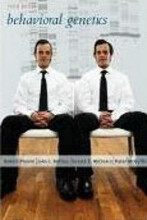Try our study magic for free
Summary: Hrd Colleges | Nale
- This + 400k other summaries
- A unique study and practice tool
- Never study anything twice again
- Get the grades you hope for
- 100% sure, 100% understanding
Remember faster, study better. Scientifically proven.
a PDF, study it super fast
- No sign up, email or credit card needed!
- AI makes unlimited flashcards
- Get unlimited quizzes and tests
- Ask AI anything
Create a notebook
- No sign up, email or credit card needed!
- Have and keep perfect overview
- Make flashcards, notes and mind maps
- Review, test and score!
Read the summary and the most important questions on HRD Colleges | Nale
-
1 Hoofdstuk 1+2
This is a preview. There are 46 more flashcards available for chapter 1
Show more cards here -
What is the definition of Human Resource Development?
a set of systematic and planned activities designed by an organizationto provide its members with the opportunities to learn necessary skills tomeet current and future job demands. -
What is at the core of all HRD efforts?
learning -
What are three HRM functions?
1. obtaining employees2. maintaining employees3. Developing employees --> HRD -
Goals of HRDHow can you improve organizational effectiveness?
1. solving current problems (e.g. an increase in customer complaints)2. preventing anticipated problems (e.g. a shortage of skilled technicians)3. targeted participant recruitment: Including as participants thoseindividuals and units that can benefit most -
Training &Development (T&D)Changing or improving employees is done with KSA's, what does this mean?
KnowledgdeSkillsAbilities -
When should T&D activities be applied?
- start when employee joins a organization- continue throughout employment career -
What are specific T&D activities? (4)
- Employee orientation- Skills and technical training- Coaching- Counseling -
Why do managers and supervisors need KSA's (knowledge, skills, abilities)?
To be effective -
What is the role of HRD professional in Organizational Development?
They work as "change agent" to facilitate the change process -
What are the roles of supervisors in HRD?
- HRD implementation- Orienttion- Training- Coaching- Career Development- Identifying training needs
Read the full summary
This summary +380.000 other summaries A unique study tool A rehearsal system for this summary Studycoaching with videos
- Higher grades + faster learning
- Never study anything twice
- 100% sure, 100% understanding































